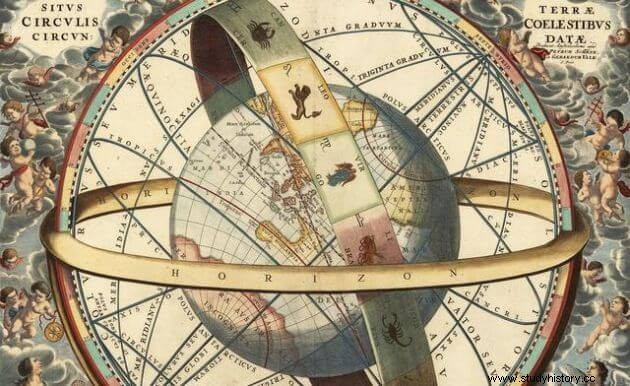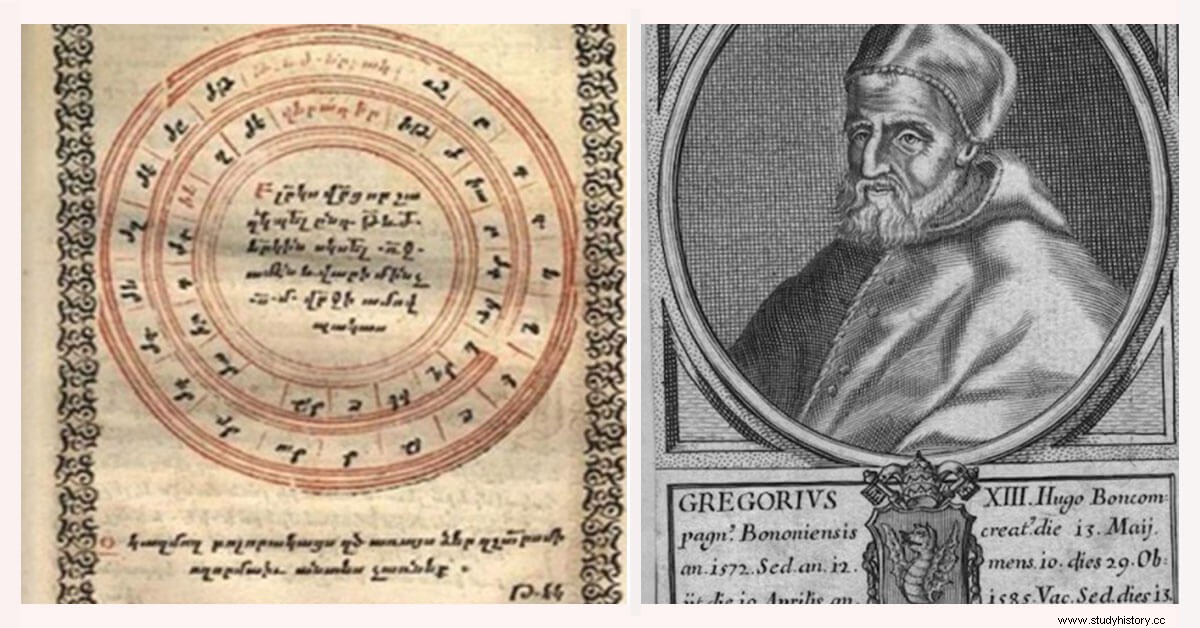The calendar it is an object that is part of our everyday life and of which we hurry to find a copy near the end of the year (after the summer we will already start looking for the new Calendar 2020 ).
It is difficult to think about how long and complex its history is:let's briefly retrace its salient stages.
Ancient Rome
 The first calendar of Ancient Rome it even dates back to its mythical founder, Romolo.
The first calendar of Ancient Rome it even dates back to its mythical founder, Romolo.
The information about him is quite nebulous and, at times, contradictory.
According to what was stated by Ovidio, the months of the year were only 10 and started from March, but according to some historians, January and February already existed.
Tito Livio it informs us in a rather detailed way of the calendar of Numa Pompilius , second king of Rome.
It was a 12-month lunisolar calendar consisting of days ranging from 29 to 31.
Throughout the year it consisted of 355 days and, to recover the ten days of the calendar year, every two years a month was inserted, Mercedonio or Intercalare, lasting 22 or 23 days.
This calendar, which also underwent various changes over time, remained in force until 46 BC
The Julian calendar
The Numa calendar, used throughout the Republican era, poorly managed by the priests who dealt with it, ended up delaying by about three months compared to the natural succession of the seasons, to the point of postponing the summer to October and November which instead, they were autumn months.
Julius Caesar wanted to remedy the situation with the introduction of a new calendar, called Julian just in honor of him.
The intention was to create a more functional calendar than the previous one.
Sosigene, illustrious Alexandrian astronomer, he obtained the important assignment.
The 46 (or 45) BC ., the year in which it came into force, was quite special:two extra months were inserted between November and December to ensure that the traditional months and seasons correspond again, as well as another intercalation of Mercedonio.
Almost certainly that year lasted 445 days.
For the rest, Sosigene established 365 days for every year plus one leap year every 4.
The Gregorian calendar

Pope Leo XIII
The Gregorian calendar, currently used in most countries of the world apart from a few rare exceptions, it was officially introduced on October 4, 1582.
In fact, 1582 lasted 10 days shorter than normal.
The decision was made and implemented by Pope Gregory XIII , with the intention of overcoming the mismatch created with the Julian calendar.
In practice, we were late with the calendar year and we had to compensate for this gap.
After a work that lasted 4 years and chaired by the doctor Luigi Lilio and by the astronomer Cristoforo Clavio, the papal bull Inter gravissimas, started the Gregorian calendar.
It was the same as the Julian one, but the leap years of the centenary years not multiples of 400 were suppressed.
Thus the gap of 5 hours, 48 minutes and 46 seconds "forgotten" for centuries was recovered, with the consequence of the subsequent phase shift.
It is, let's say, funny, to think that the days from 5 to 14 October 1582 were considered non-existent by Gregory XIII:the people who went to bed on the evening of 4 October of that year, the next morning woke up on 15 October.
